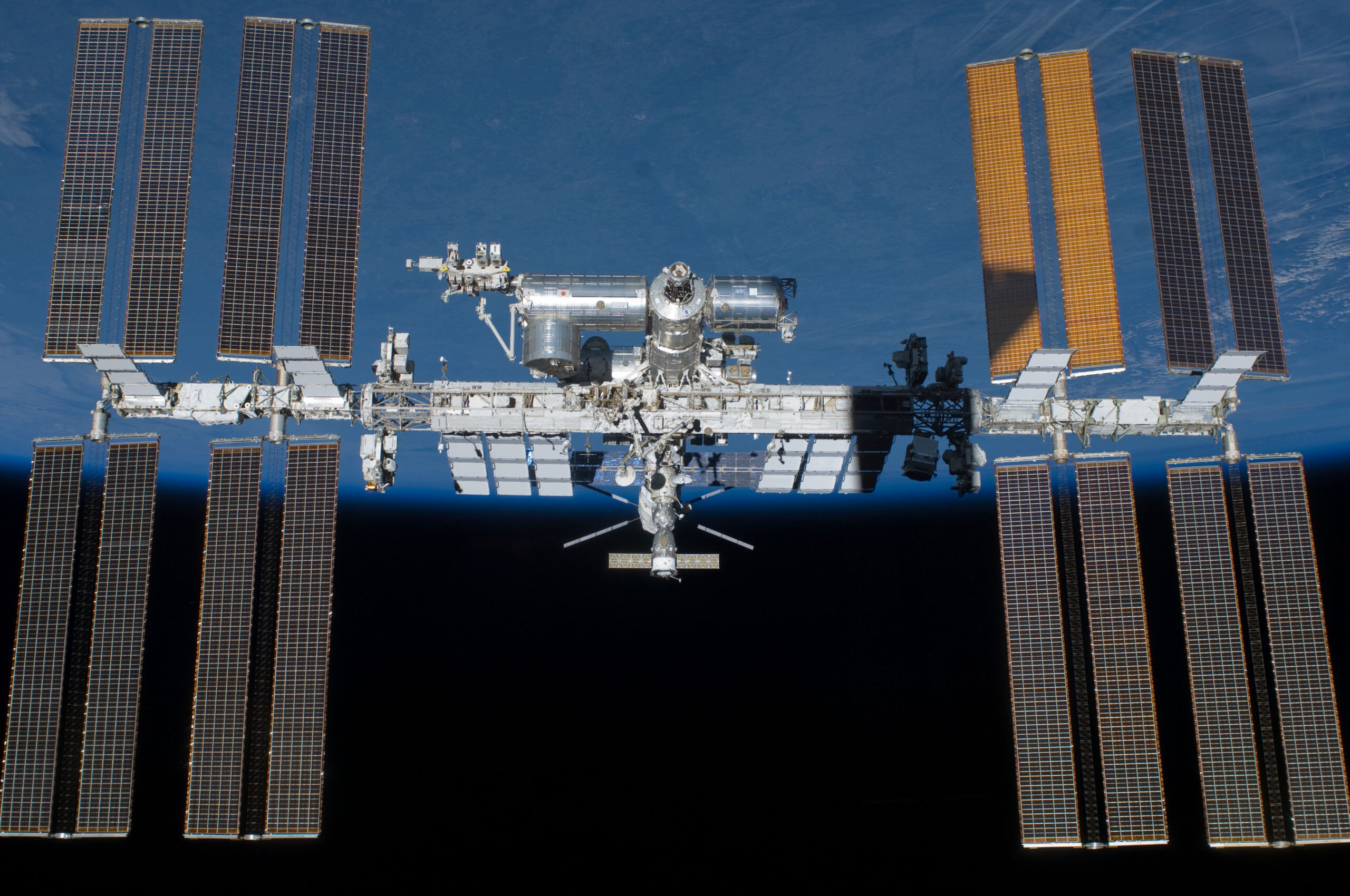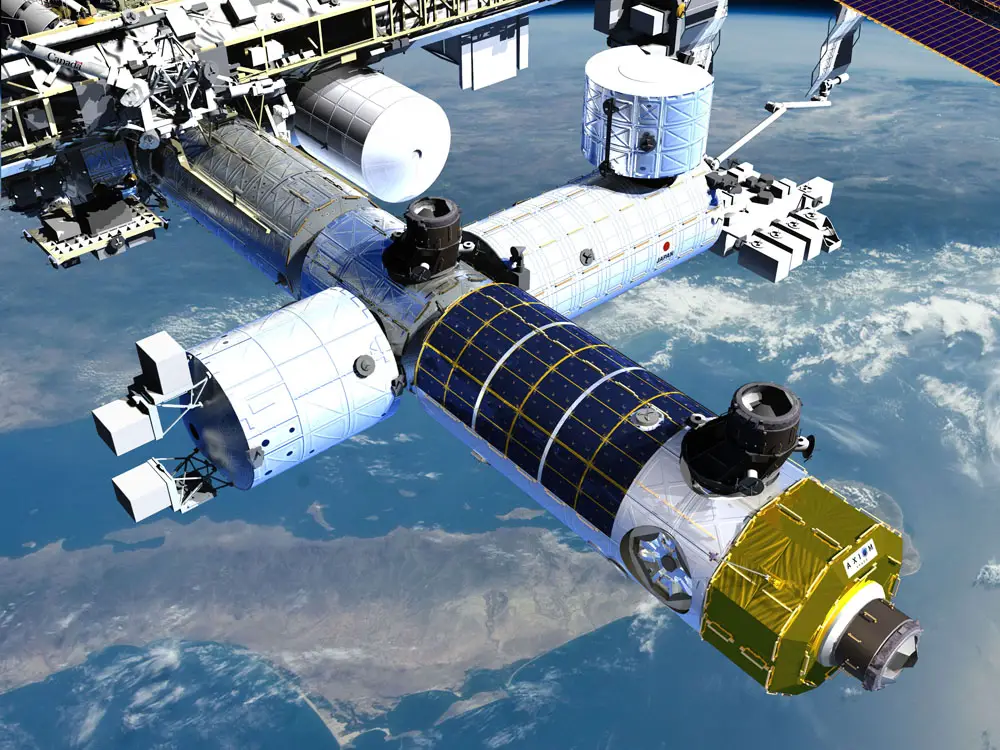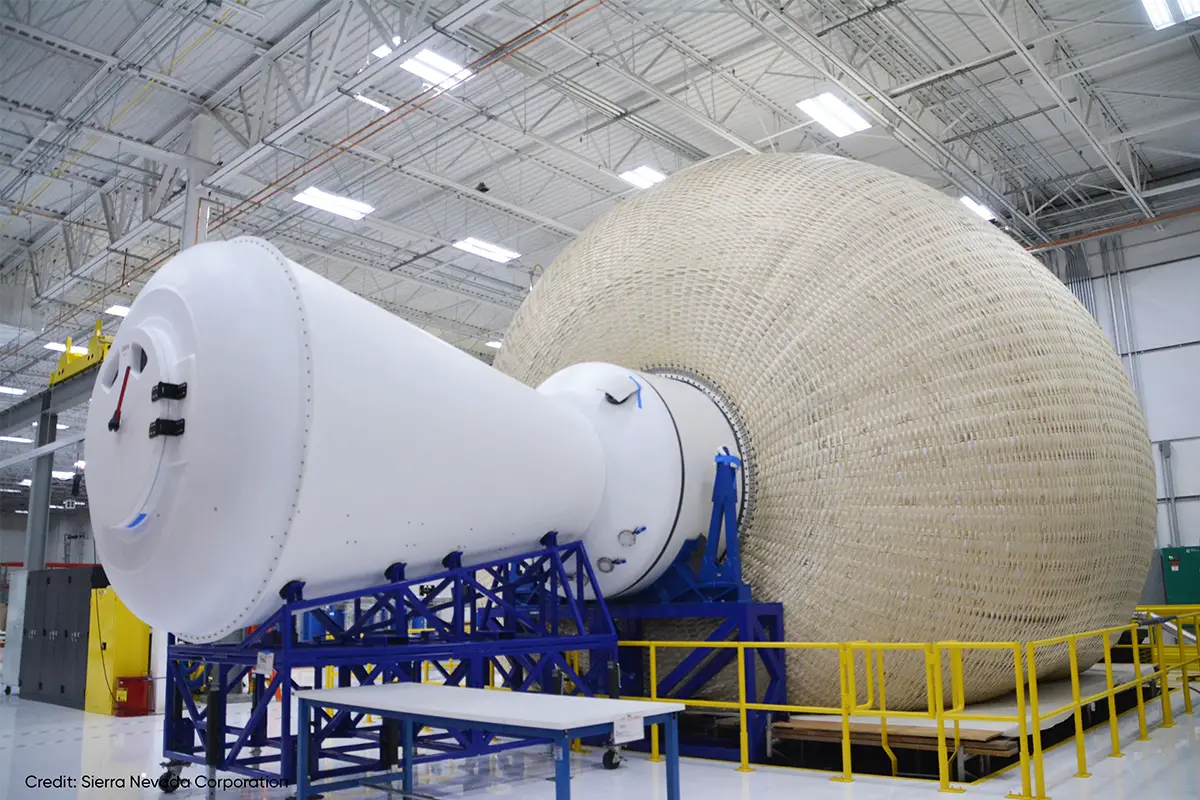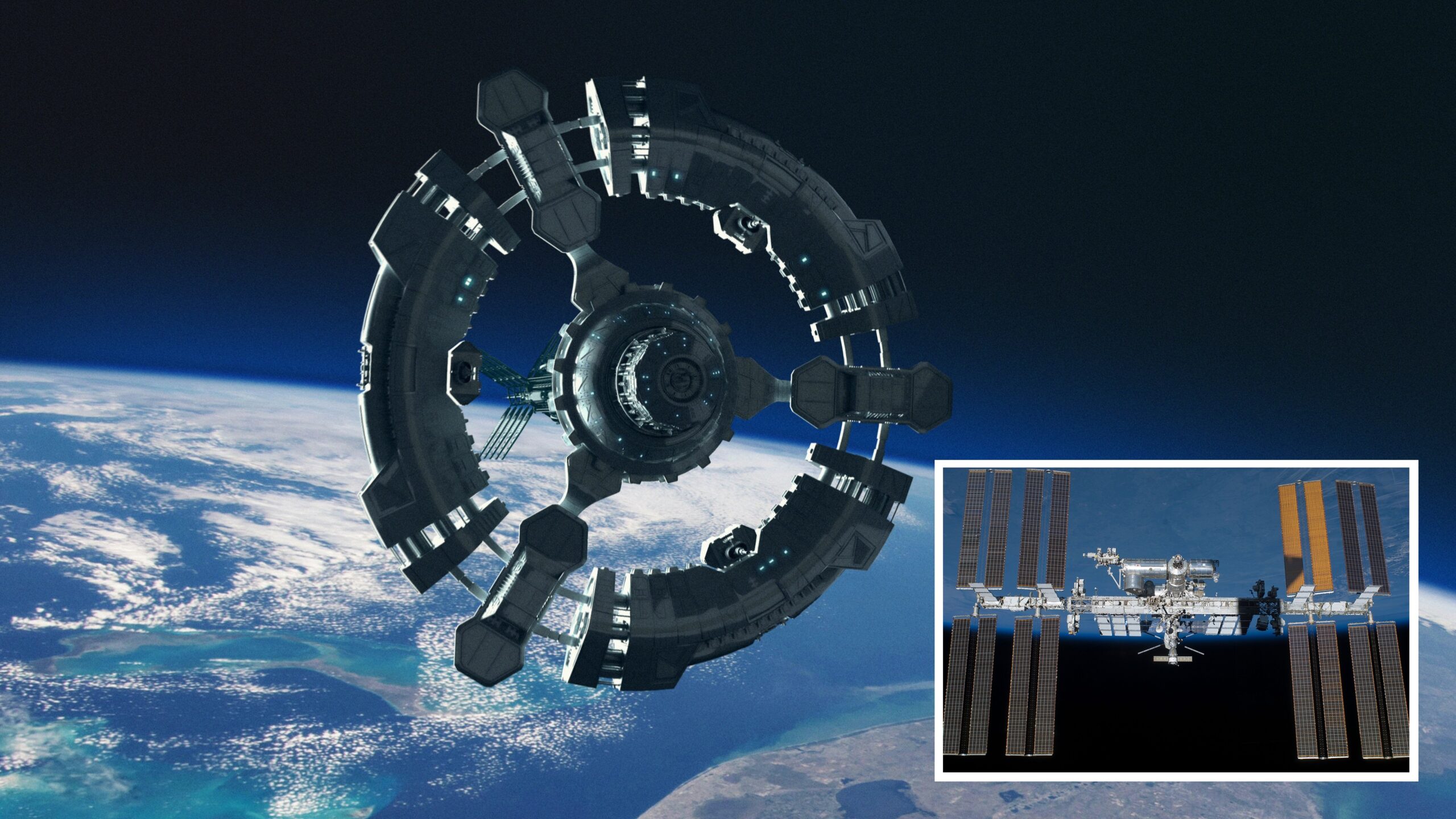One of the greatest achievements of mankind is the International Space Station, which brings together astronauts from across the globe to cooperate on groundbreaking research. The International Space Station (ISS) will be decommissioned in 2024, following which a new generation of space stations will take its place. When more people are able to travel space, new political and economic conflicts will be inevitable.
Low-Earth orbit is becoming less important as NASA shifts its attention to transporting people to the moon and ultimately Mars. During this transition, the space agency plans to lease out space stations operated by private corporations for its astronauts to use. ISS will burn up and disintegrate in the atmosphere when the new stations are ready.
Anyone who wants to work in space at some time in the future will be forced to pick among a number of different locations. That implies that governments will not only be employing these new stations to improve their national space programs but also as lucrative economic endeavors, too.
Robyn Gatens, the head of the ISS, told Recode that “commercial firms have the capacity today, and so we do not want to compete with that.” In order for the government and NASA to focus their resources on more difficult missions in deep space, we want to hand control of low-Earth orbit to private enterprises.
There might be as many as four private space stations sent into orbit by NASA-supported businesses like Lockheed Martin and Blue Origin during the next decade. A SpaceX Falcon Heavy rocket carrying the living quarters for the Gateway space station is expected to fly in 2024, according to NASA.
Besides China’s Tiangong space station, which is under construction, Russia and India aim to send their own space stations into low-Earth orbit.
Although the exact date of the ISS’s decommissioning is unknown, one thing is certain: it will happen. More than $400 million has been given by NASA to pay commercial replacements for the space station’s components through 2028. In the meanwhile, some old ISS partners are also plotting out their next moves.
Russia’s space agency, Roscosmos, aims to build a new $5 billion space station in 2025, the same year it expects to depart the ISS. To prepare astronauts for future journeys to Tiangong, the European Space Agency has begun training its astronauts.
They may make low-Earth orbit more politically charged, but these new stations are based on technology that was initially used in the ISS. As a result, academics who want to do study in space may have to consider the political ramifications of picking one country’s station over another. There will also be a new dynamic in the commercial sector, where numerous space stations will compete for the same clients.
As far as internationalism goes, the new space station competition isn’t exactly a return to Cold War territory. If everything goes according to plan, these new stations will learn from each other and greatly improve scientific understanding. But they will also make space politics a much greater aspect of space, which might have a direct influence on Earth and the exploration of the moon and Mars.
Low-Earth orbit has been reduced in size by NASA.
The International Space Station (ISS) is a massive undertaking. An estimated $100 billion was spent on the construction of this 16-module space station, which includes eight solar arrays that provide electricity for the station. As part of NASA’s research on technology that might be used on future voyages to other planets, the ISS acts as a shared laboratory in space. Radiation exposure, muscle and bone loss, and other health hazards associated with living in space are being studied by astronauts on the space station.
Cady Coleman, a former astronaut, and scientist who spent time on the International Space Station (ISS) said, “Up in space, we can measure things that we can not measure or see down below.
Right present, the space station is completely operational Onboard the International Space Station (ISS), eleven astronauts from four different nations are now working to install a new module, schedule a spacewalk, and repair damaged parts. The International Space Station relies heavily on private enterprises, notably major aerospace and military industries like Northrop Grumman and Lockheed Martin, for many of its operations. However, SpaceX has been delivering supplies and personnel to the ISS since 2012 and has only begun doing so in 2015.

In the long term, NASA wants to get out of the ’90s-era space station industry. Relocating astronauts to commercial alternatives might save NASA $1 billion a year by moving them off of the ISS, which is the size of a football field and costs $4 billion per year to maintain. NASA would only have to pay for the fraction of the newer space stations that it utilizes, making them more cost-effective. The space agency will finally be able to get rid of the ISS after these successors are put into orbit.
According to Wendy Whitman Cobb, an Air Force School of Advanced Air and Space Studies professor: “We are looking at ISS equipment that was conceived starting in the 1980s, constructed in the 1990s, launched in the 1990s and 2000s.” “It is clearly time for a change.”
ISS deorbit will take place over a region known as Point Nemo in the South Pacific Ocean, the world’s most remote point. This might take up to three years, and it will be a delicate procedure. When gravity pulls the ISS toward Earth’s surface, NASA will plan one more voyage to retrieve any leftover research from the space station (or astronauts).
It will soon be time for the ISS to be lowered into the Earth’s atmosphere using a cargo ship. According to NASA spokeswoman Stephanie Schierholz, “a handful of high-density payload and structural components” are expected to survive the fire.
When NASA dismantled its first American space station, Skylab, in 1979, it used a similar strategy to the ISS’s demise. It has been a long-term project for engineers, and they hope to fine-tune the process until the ISS is nearing the end of its mission.
For now, NASA’s objective is to extend the life of the International Space Station as long as feasible. Lawmakers from both parties want to prolong the life of the space station until 2030, which is presently included in the US Innovation and Competition Act. Biden’s administration has yet to make a final decision, and NASA and Congress are now waiting.
The private sector is creating space stations of its own.
A low-Earth orbit economy would allow NASA to divide the expense of managing a space station with the private sector, according to NASA’s plans. For future commercial space stations, the agency envisions them as a kind of coworking area.
To enable astronauts from other national space agencies and the commercial sector to access low-Earth orbit facilities, this would allow NASA astronauts to collaborate with astronauts from other space agencies. Guests from a space hotel or a media production company may also be on board the ship. These stations are also expected to be used by certain firms for microgravity manufacturing.
NASA has given seed money to four distinct proposals for a space station. The $130 million awards to Blue Origin’s Orbital Reef space station are perhaps the most well-known. There will be laboratories, 3D printers, and a garden included in this “mixed-use business park,” according to the firm.
Only a fraction of the size of the International Space Station, but an “order of magnitude” less expensive to construct, according to Blue Origin. According to images supplied by the business, Orbital Reef will have a more contemporary aspect, with a huge, tubular main hallway lined with windows and a single layer of solar arrays stretching from one side of the ship.

A new space station being created by private space business Nanoracks in cooperation with Voyager Space and Lockheed Martin, StarLab — not to be confused with Skylab — has also received NASA’s support, in addition to the Blue Origin project. Also, Northrop Grumman has put out a plan of action. StarLab and the unidentified Northrop Grumman space station intend to accommodate up to four astronauts at a time and provide lab space.
Axiom Space, a firm developing a space tourism module that will be attached directly to the ISS, has received a $140 million grant from NASA. There will be a two-meter-high window deck on the module designed by Philippe Starck, an industrial architect and designer employed by Axiom Space to evoke the feeling of “a nest.” The initial Axiom module will be joined to additional Axiom modules to build a whole new station once the ISS is decommissioned.
As a result, “the concept of what the market is is all changing,” Axiom’s chief revenue officer Tejpaul Bhatia said to Recode. As a result of studies done on the International Space Station (ISS), we have a notion of the benefits that pharmaceutical and biotech companies get in microgravity.

Risks exist with this strategy. Commercial space stations are expected to be in high demand by 2027, according to NASA. However, barely a fifth of NASA’s ISS personnel resources have been employed by private enterprises thus far, according to Gatens, the ISS director. Customers might face even more competition if China, Russia, and India begin operating commercial space stations.
These businesses, on the other hand, have vowed to find enough customers to keep going. According to NASA contracts obtained by Recode via a public documents request, millions of dollars of their seed cash are being used to build marketing campaigns. While Blue Origin has said that NASA and its partners would be its major customers for research, the StarLab station will only rely on NASA for 30% of its income for the first decade.
Because NASA can not afford to have them fail, they must succeed. As of November, NASA’s inspector general stated that crucial microgravity research, which NASA requires for trips to the moon and Mars, would not be finished by 2030. However, the agency does not have plans to create its own ISS successor. Several space policy specialists tell Recode that the space agency’s biggest fear is not being able to perform that task without its own space station.
ISS on the moon
In NASA’s intentions, humans will return to the moon and want to dwell there. Artemis missions will see NASA construct a long-term human presence on the lunar surface, including permanent housing, a rocket launcher, and potentially a nuclear power plant. Gateway, a new moon orbiting space station, is being built by NASA in order to do all of this.
The Gateway, like the ISS, is a joint effort between governments and corporations. Private aerospace space companies like Lockheed Martin and Northrop Grumman are also taking part in the project to develop a new generation of spacecraft. SpaceX has already pledged to use its Falcon Heavy launch vehicle in 2024 to deliver the first Gateway components, including a habitation module and a propulsion system.

As a transit point or a scaled-down Space Station V from 2001: A Space Odyssey, the Gateway is ideal. As a docking station for astronauts, the Gateway will be used for both lunar and Earthbound missions. As a “mission control” center for lunar activities, it will be able to house four astronauts for up to three months. The outpost will only be a fraction of the size of the ISS when it is finished. NASA hopes to send people to Mars sometime in the 2030s, and the small station might play a key part in that endeavor.
Recode spoke to Richard Mastracchio, a former ISS astronaut who is now a business development director at Northrop Grumman, which is building the Gateway’s habitation module. “This Gateway is directly derived from all the hardware and experiences learned on the International Space Station development,” he said. To put it another way, “I see no reason why we cannot build a space station circling Mars using the same lessons gained and a lot of the same gear.”
Practice expeditions to Mars were possible on the Gateway. According to Mastracchio, astronauts may use the Gateway to see how well experimental technologies perform in orbit, as well as to build and park spacecraft destined for destinations farther out in the solar system.
Despite this, the space station already has a competitor in NASA’s Gateway program. An International Scientific Lunar Station will be built by China and Russia as part of a joint lunar research initiative. As far, we do not know much about the specifics of these plans, but governments and organizations interested in participating in a worldwide effort to conduct lunar research have two options.
Space collaboration is more difficult than cooperation on Earth.
The geopolitical war on Earth has never been completely separated from space. The first space race between the Soviet Union and the United States was initiated during the Cold War. In recent years, politics has had an impact on space activities.
As a result of legislation approved by Congress in 2011 that significantly restricted NASA’s cooperation with the Chinese government, China National Space Administration astronauts were virtually excluded from ISS participation. US restrictions on Russia’s space sector have prompted repeated threats from Roscosmos to depart the space station. United States, Chinese, Russian, and Indian anti-satellite missile tests continue to generate debris in orbit, adding to global tensions.
There is a possibility that tensions may worsen if other space stations are launched, allowing nations involved in space operations to create international partnerships beyond the ISS.
As part of its Tiangong space station, China aims to collaborate with other nations and is willing to collaborate with the United States in the future Russia and India’s plans for new space stations are expected to include the participation of other governments and corporations. Namrata Goswami, an independent researcher of space politics, says that although the four commercial space stations with NASA support seem to be global platforms, they will be subject to US laws restricting who nations they may collaborate with.
According to Goswami, “everything involving space is not simply a matter of space prestige and power, but also of economic rewards and economic progress.” Currently, the space sector is valued at $400 billion.” These technologies are being developed in part thanks to the space station.
Countries like the United Arab Emirates, Nigeria, and Australia, who have long sought to send their own astronauts into space but lack a space station, would benefit from these innovations. In addition to financial considerations, the choice of the partner space station will be influenced by political considerations.
International cooperation in space will continue even after NASA’s ISS is decommissioned. Instead, it marks the beginning of a new space station age, one that will be more politically and economically difficult to co-operate on. As this age demonstrates, the human struggle is not confined to our own planet.

